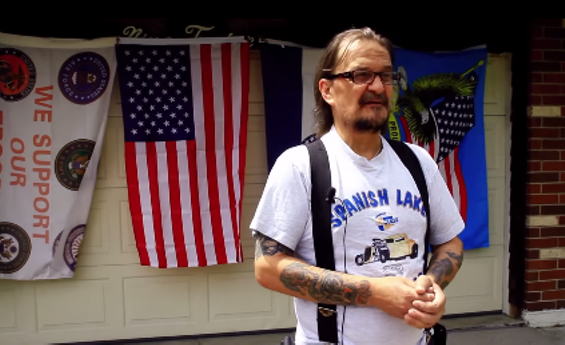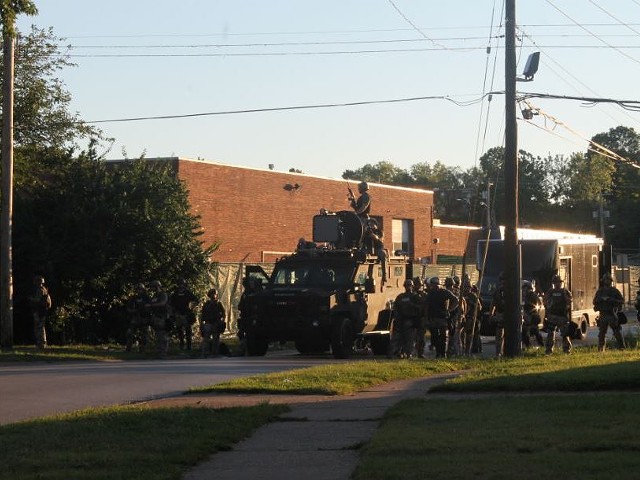With violence erupting in Ferguson night after night, right now might be the perfect time to watch Phillip Andrew Morton's new movie Spanish Lake.
The documentary chronicles the racial tensions and federal decisions that drove white residents out of the unincorporated north St. Louis County township Spanish Lake, just eight miles from Ferguson.
But if you're in St. Louis and hoping to watch Spanish Lake on the big screen, you're out of luck. Wehrenberg Theaters, a local movie-theater chain, says it's pulling the movie before it has even been widely released.
"With all the negativity going around, we wanted to look at a different opening date for it," says Kelly Hoskins, vice president of marketing for Wehrenberg. "I think it would get lost.... We think, right now, people won't really pay attention."
See all Riverfront Times coverage of Michael Brown and Ferguson.
The theater told Spanish Lake's producers they were afraid of showing a movie that shines a spotlight on the issues underlying the nightly unrest in Ferguson.
"They were concerned with what would go on at the theater if they played the film," says Matt Jordan Smith, executive producer and producer of Spanish Lake. "It could incite violence or conflict."
Smith says while there's nothing in the movie that advocates violence or rioting, he and Morton are sensitive to the difficulties facing the entire St. Louis region now. So far, they haven't heard when Wehrenberg will show the film.
"We've been trying to tell them this is the entire journey of our film," Smith tells Daily RFT.
See our review: How Ferguson became Ferguson: Urgent Doc Spanish Lake Tracks a St. Louis Suburb's Shift from White to Black
The movie's YouTube trailer has started to go viral since Ferguson became its own hashtag and images of highly militarized riot police spread around the world. The film's producers say people viewed the trailer 10,000 times on Sunday, possibly looking for some clue to explain how years of racial divides have grown into full-on riots, looting and violence.
"The racial tensions are so bad, especially in St. Louis," Smith tells Daily RFT. "Neither Phillip [Andrew Morton] nor I were surprised it has boiled over to this point. You can feel the segregation, it's so thick."
Morton's film tells the story of the degeneration of Spanish Lake, where he grew up before earning a film degree at Webster University and moving to California. The unincorporated township grew into an idyllic, mostly middle-class white refuge at the confluence of the Missouri and Mississippi rivers in the post-war years, but without an official, incorporated city government, Spanish Lake residents couldn't push back against the federal officials scouting new sites for high-density urban housing.
Poorer black families started moving in, launching a mass exodus of white families to St. Charles County -- part of a nationwide social phenomenon known as "white flight."
"St. Louis is particular in that we are not only segregated by race, we are segregated by class and religion in a hyper-segmented way," Morton tells Daily RFT. "I want to portray the reality of the situation. I wasn't interested in using rose-colored glasses on this story."
White flight isn't unique to St. Louis, but the rapid decline of Spanish Lake is powerfully illustrative. In 1990 Spanish Lake was 80 percent white; by 2010 it was 80 percent black. Today, it's mostly empty.
Morton's own father moved to Ferguson and had to consider evacuating his home as violence there grew last week.
Follow Lindsay Toler on Twitter at @StLouisLindsay. E-mail the author at [email protected].






